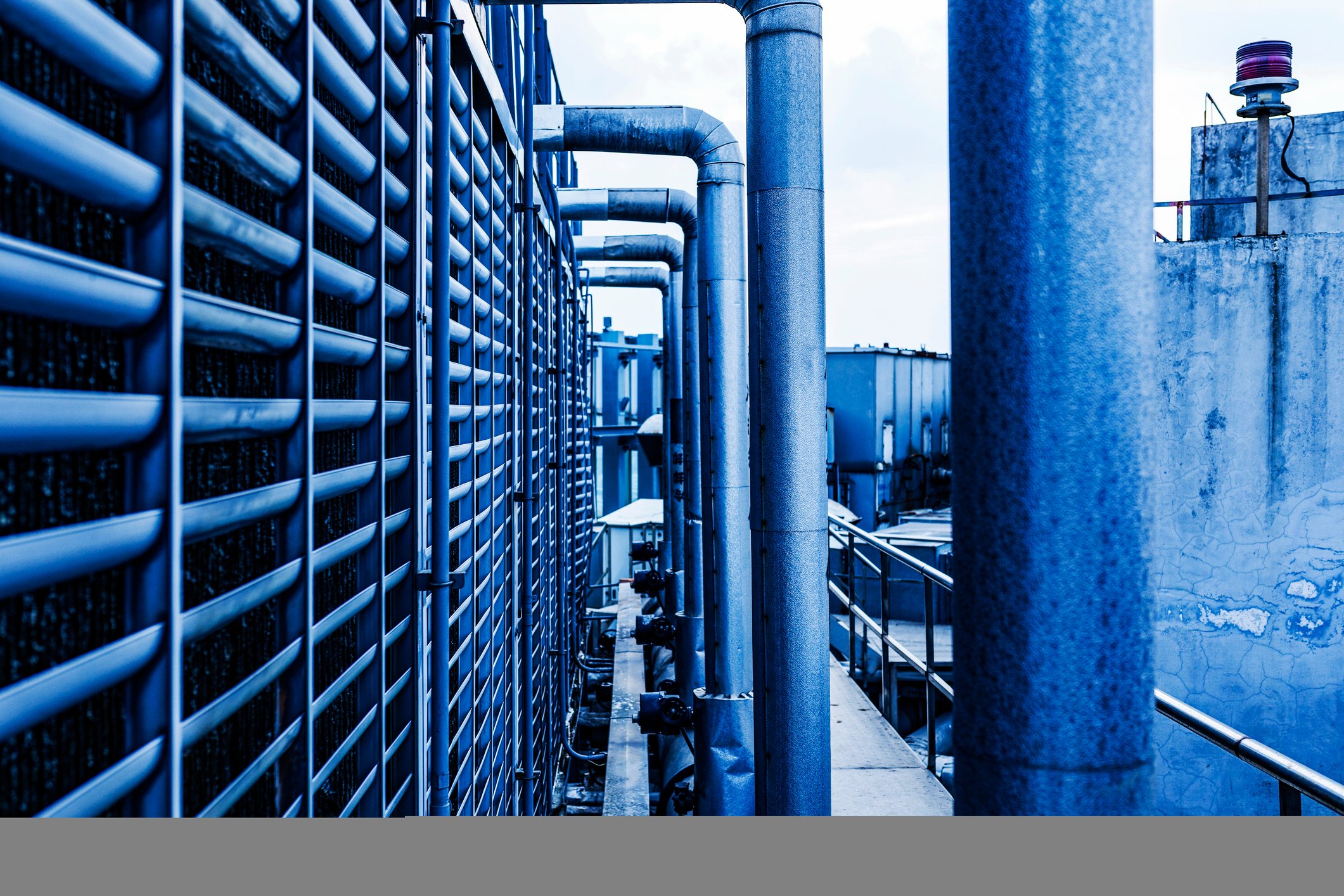In the chiller industry, the evolution of centrifugal compressor chiller cycles has led to an interesting and powerful cycle and related compressor configuration which involves reinjection of refrigerant between stages. Such systems are thermodynamically identified broadly as cascade cycle options and have the common objective of improving the Coefficient of Performance (COP) of the standard refrigeration cycle.
More specifically, one interesting cascade cycle variation on a standard cycle is what the chiller industry has labeled an ‘economizer’ cycle. ‘Economizer’ can actually mean many things in the refrigeration industry, but here I am referring to a cycle where part of the refrigerant flow coming from the condenser is reinjected back into the compressor, while the remaining flow continues through the normal cycle, to be heated in the evaporator, with the device used to separate the flow being the economizer. This arrangement essentially breaks up the expansion process into two stages, with the economizer in the middle of the expansion process. Physically an economizer is basically a tank, a flash tank, effectively separating vapor from the liquid refrigerant. It’s this vapor portion of the refrigerant flow that is injected back into the compressor, typically between the 1st and 2nd stages of a two stage compressor (the same process can be accomplished with a three stage compressor, adding another intermediate step in the expansion process).

The advantage of this cycle is that the flashed refrigerant, typically about 10-15% of the flow rate going into the flash tank, is already partly pressurized and needs only to be pumped up to condenser pressure by the second stage of the compressor, reducing compressor power consumption. The economizer cycle also tends to reduce the overall refrigerant flowrate by 6-10% of the standard cycle flow rate. These two benefits combine to make the cycle more efficient, as well as potentially increasing the capacity of the chiller if the standard flow rate is still used.
The reinjection of the economizer flow in-between stages definitely impacts the compressor design, as a two (or three) stage design is now mandatory, and the flow injection between compressor stages must be done very carefully so as to not disrupt the interstage flow. Aside from the need for the multi-stage configuration (which might be used anyway without the economizer, for lower stage loading and better performance), there are other tradeoffs that must be considered if designing an economizer based system. Additional hardware is needed for the economizer itself, additional piping and valving is required, as well as the design integration needed to get the economizer flow into the compressor. But these tradeoffs are typically well worth the improved compressor and cycle performance for certain classes of chillers.
The best way to visualize the thermodynamics of an economizer cycle is to study a pressure/enthalpy (p/h) diagram for an economizer cycle compared to a simple cycle. Instead of presenting and reviewing these diagrams here in this blog, I’d like to invite you to join our next Turbomachinery Innovation Forum, which will be on centrifugal chillers, where we will cover this subject in much greater detail. We will also cover other important topics related to designing and manufacturing centrifugal compressors for chiller applications. You can register for this free forum at this link: https://www.conceptsnrec.com/events/turbomachinery-innovation-forum-2020-centrifugal-chiller-compressors. If you are unable to join or are reading this blog after the forum has taken place, you can still listen to recordings from the forum by registering on our website site at the same link.
#turbomachinery #chillers #compressors #rotatingequipment #conceptsnrec





